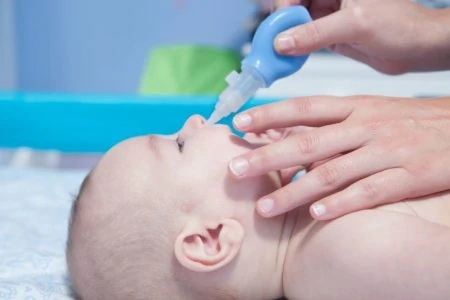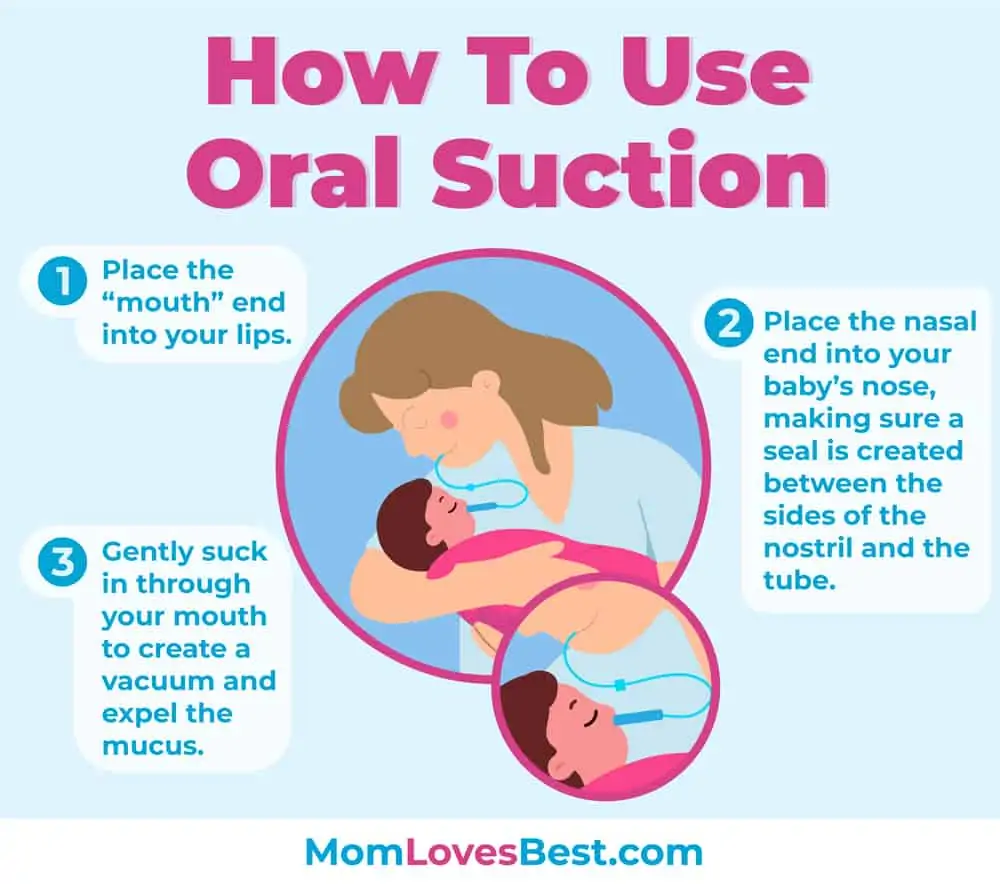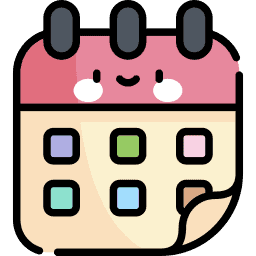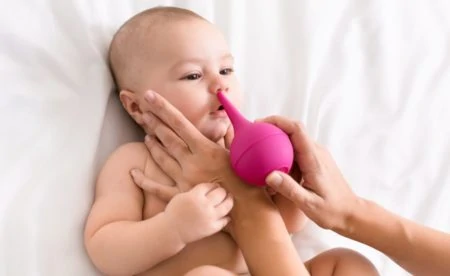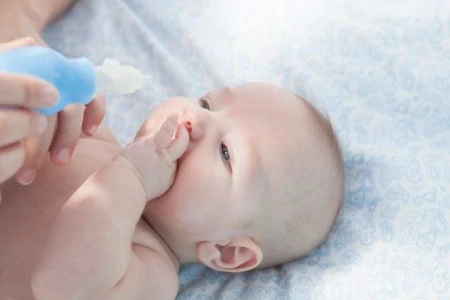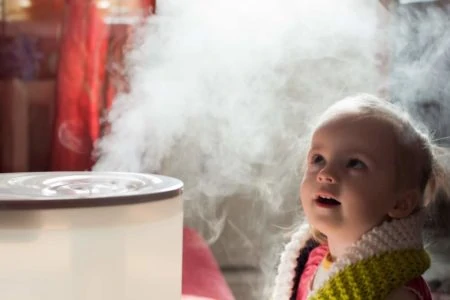Is your baby struggling to breathe through a stuffy nose? Watching your little one fight congestion is heartbreaking, especially since they haven’t learned how to clear their own airways yet.
You want to help, but you need to know what is safe and effective.
We have compiled the best at-home steps to relieve your baby’s discomfort. In this guide, we’ll break down the common causes of congestion, spot the symptoms, and explain which over-the-counter options are safe (and which ones you should skip). Most importantly, we’ll help you decide when it is time to call the pediatrician.
Key Takeaways
- Common Causes: Dry air, viral infections, allergies, and simple anatomy are the most frequent culprits behind infant congestion.
- Watch for Symptoms: Look for noisy breathing, trouble feeding or sleeping, and nasal discharge; these signal a blocked nose.
- Safe Treatments: Saline drops, cool-mist humidifiers, nasal suctioning, and keeping your baby upright are the best ways to provide relief.
- Safety First: Avoid menthol rubs on babies, skip unverified medications, and never insert objects like cotton swabs into the nose.
What Causes Nasal Congestion in Babies?
Congestion usually happens when nasal tissues swell or mucus production goes into overdrive. Because your baby’s nasal passages are tiny, even a small amount of inflammation or fluid can cause a blockage.
Here are the most common reasons your baby might be stuffed up.
- Small Anatomy: Babies have incredibly narrow nasal passages. It takes very little mucus to block them, which often results in loud, snorting breathing sounds.
- Inability to Clear Mucus: Adults can blow their noses; babies cannot. Secretions get stuck and linger until the baby sneezes, which is nature’s way of clearing an infant’s nose.
- Dry Air: Indoor heating and air conditioning often strip moisture from the air. This dryness irritates the sensitive lining of the nose and triggers swelling.
- Viral Infections: The common cold is a frequent visitor. When a virus takes hold, the body fights back with inflammation and thick mucus, leading to a blocked nose (1).
- Environmental Irritants: Tiny noses are sensitive. Dust, chemical cleaners, strong perfumes, pet dander, or cigarette smoke can trigger immediate congestion.
- Trauma from Suctioning: It is possible to overdo it. Aggressive or frequent suctioning with a bulb syringe can inflame the nasal tissue, causing more swelling than before.
- Foreign Objects: Curious babies put everything in their mouths, and sometimes up their noses. A small bead or piece of food can block the airway and increase secretions.
- Reflux: It is normal for babies to spit up, but sometimes stomach contents travel into the back of the nasal cavity. The acidity irritates the tissue and causes congestion, even if you don’t see visible spit-up coming out of the nose.
- Allergies: While seasonal pollen allergies are less common in newborns, sensitivities to dust mites, pets, or milk proteins can cause chronic mucus production.
- Nasal Growths: Though rare, physical obstructions like nasal polyps or cysts can block airways. These are sometimes associated with conditions like cystic fibrosis (2).
- Structural Issues: Some babies are born with cartilage that isn’t straight (stenosis) or structural defects like choanal atresia, which physically blocks airflow (3).
What Are the Symptoms?
Since your baby cannot tell you they are stuffed up, you have to play detective. While a runny nose is obvious, congestion can affect your baby’s entire routine.
- Feeding Struggles: Babies breathe through their noses while eating. If the nose is blocked, they have to unlatch frequently to breathe.
- Sleep Disruption: You may notice frequent waking or restlessness.
- Visible Discharge: Look for clear, yellow, or green mucus.
- Noisy Breathing: Listen for rasping, snorting, or whistling sounds.
- Snoring: Loud breathing during sleep is a common sign.
- Coughing and Sneezing: Post-nasal drip can irritate the throat, causing a cough.
- Spitting Up: You might see spit-up coming through the nose due to the pressure.
Note that newborns naturally have noisy breathing for the first few days of life as they clear amniotic fluid. This usually resolves within the first week.
How To Relieve Nasal Congestion
When you notice your baby is uncomfortable, you want solutions that work quickly. Here are the most effective, safe methods to clear the blockage.
- Saline Drops: This is the gold standard for relief. Saline drops loosen thick mucus, making it easier to clear. Lay your baby down, put a couple of drops in each nostril, and wait a moment. You can then use suction or let gravity do the work by engaging in tummy time.
- Nasal Suctioning: Once the mucus is loosened by saline, you need to get it out. You can use the standard bulb syringe provided by the hospital, or upgrade to a nasal aspirator. Many parents swear by the NoseFrida, which allows you to control the suction level with your own breath (don’t worry, there is a filter). Electric aspirators are also available if you prefer a gadget-based approach.
- Cool-Mist Humidifier: Dry air hardens mucus. Running a cool-mist humidifier in the nursery adds moisture to the air, which keeps nasal passages lubricated and prevents irritation.
- Steam Session: Create a sauna in your bathroom. Turn on a hot shower, close the door, and sit in the steamy room with your baby for 10 to 15 minutes. The warm, moist air does wonders for loosening congestion before a feeding or bedtime.
- Keep Them Hydrated: Mucus becomes thicker when the body is dehydrated. Offer breast milk or formula frequently. Your baby may prefer shorter, more frequent feeds if they are struggling to breathe while eating.
- Keep Baby Upright: Lying flat makes congestion worse. During the day, try wearing your baby in a carrier. Being upright helps fluids drain naturally and can make your baby much more comfortable.
- Tummy Time: Gravity is your friend. Tummy time encourages mucus to drain out of the nose rather than down the throat. Do this only when the baby is awake and supervised.
- Check Air Quality: Eliminate potential irritants. Change your HVAC filters regularly to trap allergens. Avoid using scented candles, aerosols, or strong cleaning products around the baby, as these can aggravate inflamed nasal tissues. Consider an air purifier for the nursery.
- Wait and Watch: If your baby sounds stuffy but is eating well, sleeping fine, and acting happy, you may not need to intervene. Sometimes less is more to avoid irritating the nose further.
A note on medication: Avoid over-the-counter decongestants. Most have not been tested on infants and can have serious side effects. Stick to saline and physical removal methods unless your doctor explicitly prescribes otherwise.
What To Avoid When Treating Congestion
It is tempting to try anything to help your little one breathe easier, but some adult remedies are dangerous for infants.
- Vicks Vaporub: While popular for adults, this mentholated rub is unsafe for children under two. It can actually increase mucus production and inflame the airways in babies (4).
- OTC Decongestants: Cough and cold medicines are generally not recommended for children under age 4. They can cause rapid heart rate and other adverse reactions.
- Your Fingers: Your fingers are too large and carry bacteria. Trying to fish out a booger with a fingernail can cause nosebleeds or introduce an infection.
- Cotton Swabs or Tissues: Never stick a cotton swab or rolled-up tissue inside your baby’s nose. You risk pushing the mucus further up the nasal cavity, or the cotton could detach and become a foreign object hazard.
Always consult your pediatrician before using any “natural” remedies, essential oils, or homeopathic products. “Natural” does not always mean safe for a newborn’s physiology.
When to See a Doctor
Most congestion is harmless and clears up within a week. However, respiratory distress is serious. You should call your doctor or seek emergency care if you notice the following red flags (5):
- Breathing Mechanics: Look for “retractions,” where the skin sucks in between the ribs or at the base of the throat with every breath.
- Nostril Flaring: The nostrils widen significantly with each inhale.
- Sounds: Grunting or moaning at the end of a breath.
- Color Changes: A blue or gray tint around the lips, nose, or fingernails indicates a lack of oxygen.
- Dehydration: Fewer than 4 wet diapers in 24 hours.
- Fever: Any fever in a newborn (under 3 months) warrants a call to the doctor immediately.
Nasal Congestion FAQs
The Bottom Line
Dealing with a congested baby means long nights and extra stress for parents. It is difficult to watch your child struggle, but remember that snotty noses are a normal part of babyhood.
Most congestion will clear up on its own within a week. Focus on keeping your baby comfortable using saline, suction, and humidity. If one method doesn’t provide relief, try another. Avoid unproven medications and stick to physical remedies that help clear the airway safely.
Trust your instincts. If your baby is struggling to breathe, dehydrated, or running a fever, do not hesitate to call your doctor. You are doing a great job; this phase will pass soon.
